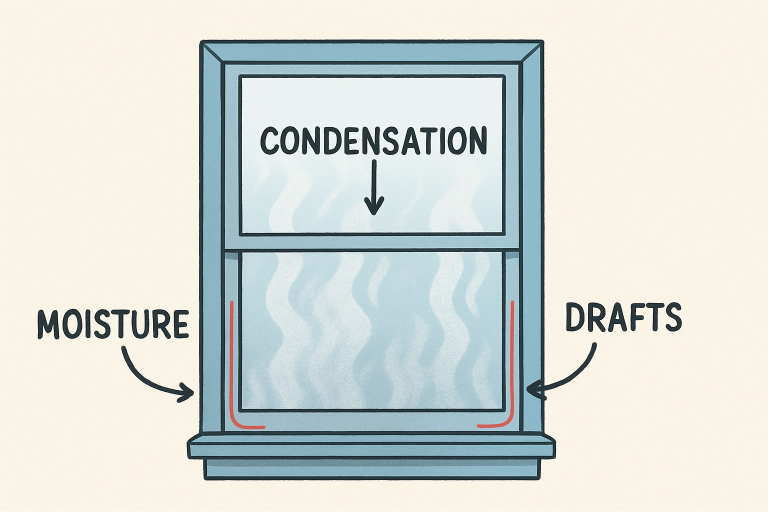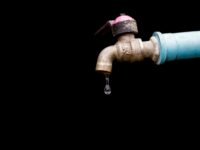The following contribution is from another author.
Table of Contents
- The Importance of Window Seals
- Common Signs of Seal Failure
- Impact on Energy Efficiency
- Preventive Measures
- Repair or Replace: Making the Right Choice
- The Role of Professional Inspection
- Conclusion
Key Takeaways
- The integrity of window seals is fundamental to home comfort and energy efficiency.
- Learning to identify early warning signs of seal failure can prevent costly repairs and energy waste.
- Seals that fail compromise insulation, leading to higher utility bills and performance issues in heating and cooling systems.
- Adopting habits of regular maintenance, professional installation, and quality material selection reduces the risk of seal failure.
Windows serve as the barrier between your home and the elements, playing a vital role in managing both comfort and energy usage. When their seals break down, the consequences can quietly cause problems—from increased utility bills to a less comfortable living space. Recognizing early warning signs, such as those described in 7 signs of window seal failure, is crucial to avoid larger, costlier repairs and protect your home’s energy efficiency. Failed window seals can let in drafts, moisture, and dust, leading to higher energy costs, accelerated wear on HVAC systems, and diminished home aesthetics. Regular inspections, quality materials, and professional installation help prevent seal failure and extend window lifespan. Understanding repair versus replacement options allows homeowners to make informed decisions that protect comfort, energy efficiency, and long-term home value.

The Importance of Window Seals
Window seals are manufactured to provide an airtight and watertight barrier between your home’s interior and the outdoors. This airtight seal is essential for maintaining desired indoor temperatures, as it keeps conditioned air inside and outdoor air out. When windows are tightly sealed, your home’s heating and cooling systems don’t need to work as hard to maintain comfort, reducing overall energy consumption. Additionally, effective seals block moisture and pollutants, which helps protect your home’s structure and indoor air quality. According to the Department of Energy, windows account for 25–30% of residential heating and cooling energy use, so maintaining their integrity is imperative.
Common Signs of Seal Failure
Detecting window seal problems early can save you both money and headaches. Be alert for these hallmark symptoms:
- Condensation Between Glass Panes: If you notice foggy windows or moisture between double or triple-pane glass, it’s a clear signal the seal has failed and insulating gas has leaked out. Your windows will lose both insulation and transparency, which can make indoor temperatures harder to regulate, especially in regions prone to extreme weather conditions, as explained by BBC Weather.
- Drafts and Air Leaks: A failed seal often lets outside air seep through closed windows, making certain rooms uncomfortable and increasing your reliance on heating and cooling equipment.
- Glass Distortion or Warping: Loss of pressure inside the glass unit can alter the window’s appearance, making the glass look bent or warped.
- Difficulty Opening or Closing: Water ingress from a broken seal can damage window frames, swell materials like wood, and make operation stiff or impossible.
Impact on Energy Efficiency
Energy efficiency drops rapidly when your windows are no longer properly sealed. Drafts force HVAC systems to run longer, and lost insulation drives up power and fuel costs. In severe cases, the negative effect on your budget may be noticeable within a single billing cycle. Additionally, the extra workload on HVAC components can shorten their lifespan and lead to expensive breakdowns. A
Preventive Measures
- Stay on top of inspections: Look for visible signs of degradation, condensation, or draftiness at least twice a year—especially before and after harsh weather seasons.
- Commit to professional installation: Improperly installed windows are far more likely to develop seal issues prematurely. Relying on reputable professionals ensures every step is handled correctly.
- Invest in quality materials: Select window products known for their durability and robust weather resistance to minimize future maintenance needs and vulnerabilities.
Repair or Replace: Making the Right Choice
Sometimes, resealing windows or replacing just the affected glass unit is enough to restore performance. However, extensive condensation, persistent drafts, or widespread warping often mean that full window replacement will be more cost-effective in the long run. Consulting with a qualified window contractor can help you weigh repair versus replacement, taking into account the age of your windows, the extent of the damage, and your energy goals.
The Role of Professional Inspection
Periodic inspections by window specialists play a critical role in safeguarding your home. Professionals have the tools and training to detect subtle warning signs, measure window performance, and offer preventive advice that’s tailored to your local climate. They can recommend optimal repair solutions, maximize your energy savings, and protect your investment in your home’s comfort and value. Scheduling regular professional assessments is a proactive way to maintain window efficiency before costly issues arise.
Conclusion
Staying vigilant about window seal performance protects your home’s comfort, utility budget, and longevity. Early detection combined with ongoing maintenance, high-quality materials, and professional help ensures your windows continue to work efficiently for years. By spotting the signs of failure and acting promptly, you can prevent small problems from growing into expensive repairs—protecting both your home and your peace of mind.

















Great article! It really helped me understand why keeping window seals in good shape matters for saving energy and avoiding costly repairs.